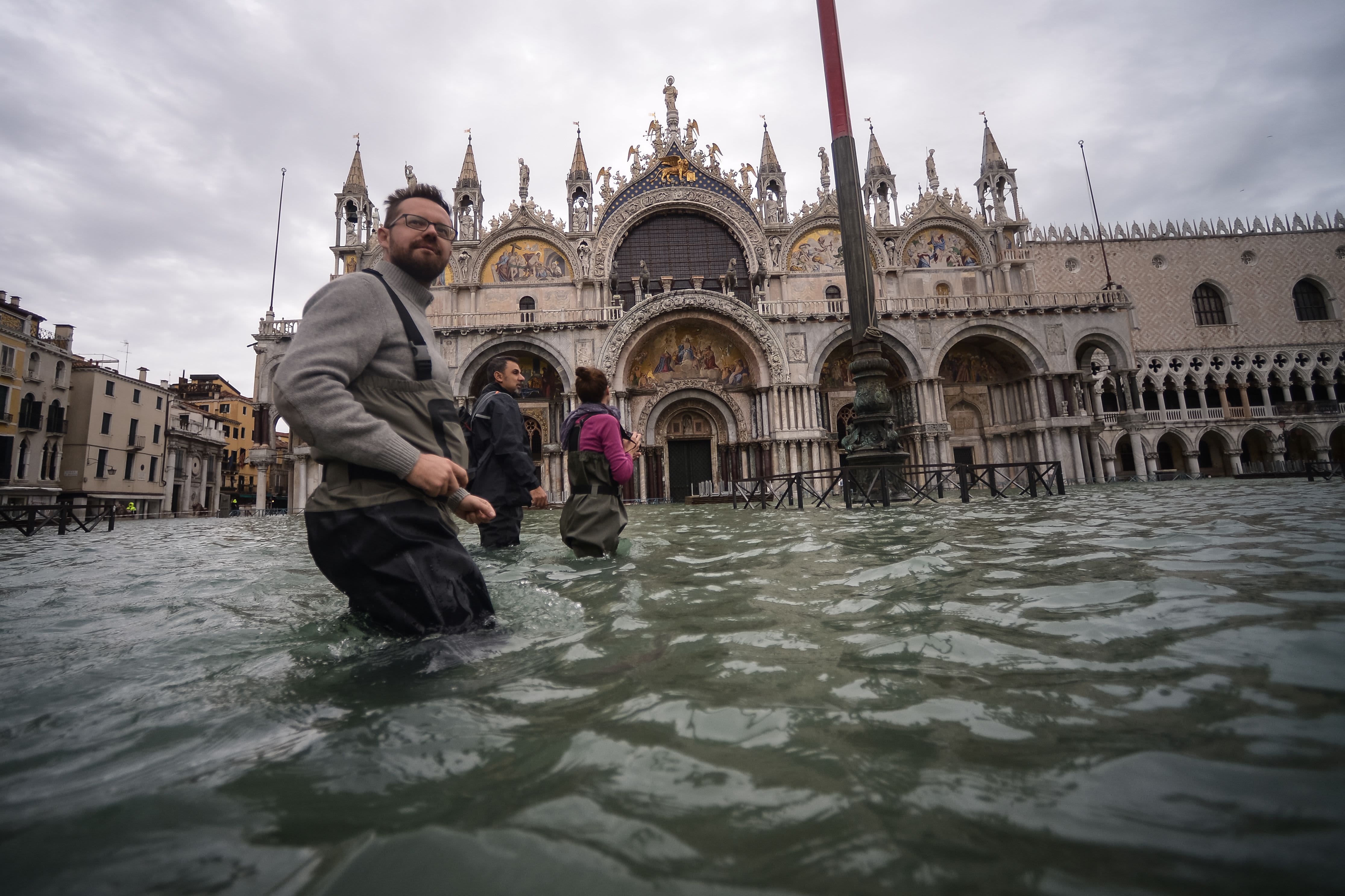Coastal flooding could hit nearly 20% of global GDP as climate change accelerates storms, sea level rise

A general view shows people walking across the flooded St. Mark's Square, by St. Mark's Basilica on November 15, 2019 in Venice, two days after the city suffered its highest tide in 50 years.
Filippo Monteforte | AFP | Getty Images
Coastal flooding made worse by climate change could damage assets worth up to $14.2 trillion by 2100 as rising seas inundate coastal homes and infrastructure, according to new research published on Thursday in Scientific Reports.
Without worldwide investment in flood defenses or a decrease in global emissions, the outlook is stark: Within the century, the land area flooded will increase by 48% (roughly the size of France), the population impacted will increase by 52% (about 287 million people) and the infrastructure affected will increase by 46%, which will comprise about 20% of global GDP, researchers warned.
"We are attempting to understand the magnitude of the global scale impacts of future coastal flooding," said Ian Young, a professor at the University of Melbourne and an author of the study.
"Globally we need to understand that changes of this nature will occur by 2100 and we need to plan how we are going to respond," he said.
Researchers analyzed data on global sea level rise projections under various greenhouse gas emission scenarios and focused on areas of the world at risk of flooding from factors like storm surge, tides and ocean waves.
A total of 68% of the global coastal area flooded will be a result of tide and storm events and 32% will be a result of regional sea level rise. Flooding will cause the most damage in the northeast U.S., northwest Europe, southeast Asia and northern Australia.
Razarbag Road in Dhaka is submerged by flood water following incessant monsoon rain which has inundated the capital's roads and crossroads throughout the down-town area. The monsoon has forced the evacuation of more than 1 million people.
Mohammad Asad | Pacific Press | Getty Images
Island nations and countries with higher population density in low-lying coastal areas will be disproportionately affected.
"Significant parts of the third world will be impacted and the humanitarian issues will be significant," Young said.
Areas at highest risk include southeast China, Australia's Northern Territory, Bangladesh, West Bengal, Gujurat in India, the U.K. and U.S. states including North Carolina, Virginia and Maryland.
Climate change is driving sea levels to rise at a rate of about one-eighth of an inch per year. Higher sea levels push storm surges further inland, which creates more destructive flooding along the coastlines.
Flooding results in damaged homes, ruined roads and contaminated drinking water, especially in communities that have hazardous waste sites at risk of flooding.
In the U.S., where 40% of the country's population lives in high density areas on the coast, rising seas are causing an extraordinary and record surge in coastal flooding, according to the National Oceanic and Atmospheric Administration. Even as floods worsen, fewer Americans are purchasing flood insurance, some of whom cannot afford coverage.
"Coastal areas are very susceptible to rising sea levels and climate change," said Ebru Kirezci of the University of Melbourne and an author of the research. "In order to prevent adverse effects of climate change and sea level rise, developing and tailoring adaptation strategies are necessary depending on the coastal hazard levels and the necessities of coastal communities."
Adaption strategies including building and enhancing coastal protection structures, such as dykes or sea walls, as well as deploying coastal warning systems and increasing preparedness, according to Kirezci.
"The impacts are global but, like many other climate-related issues, specific locations will be impacted more adversely than others," Kirezci said. "This will require careful long-term planning of adaptation strategies to increase the resilience and preparedness of the coastal zones."
Flooding in the Brickell neighborhood as Hurricane Irma passes Miami, Florida, U.S. September 10, 2017.
Stephen Yang | Reuters
Source
Check Our More
No comments